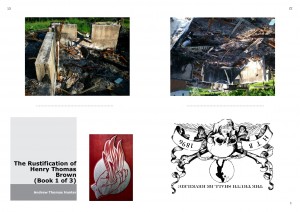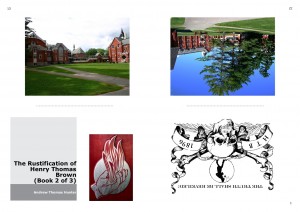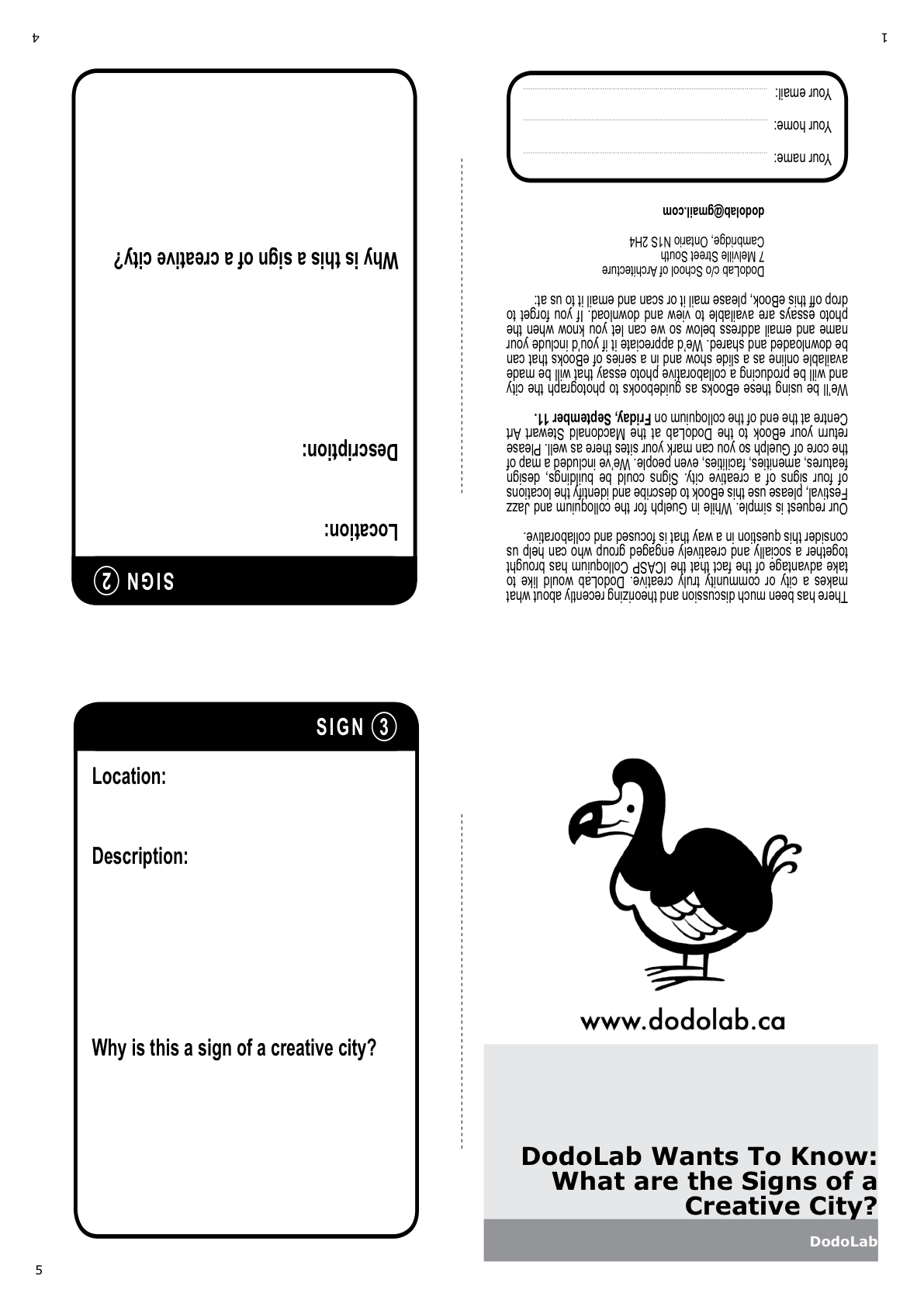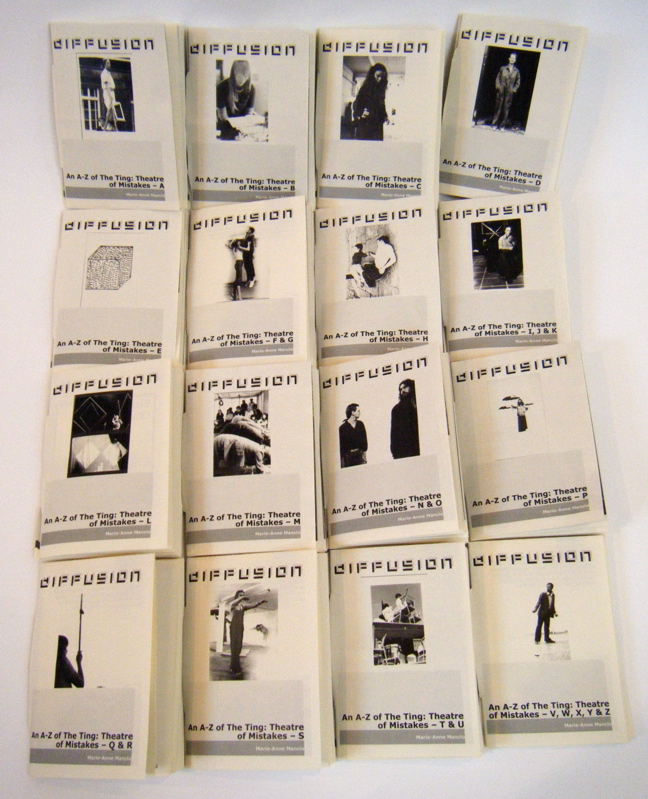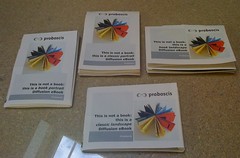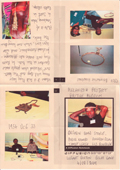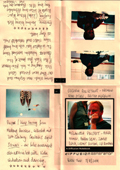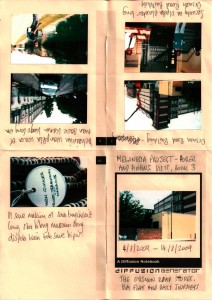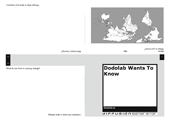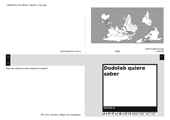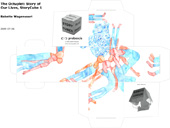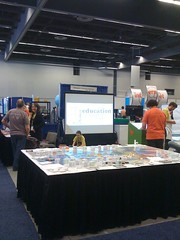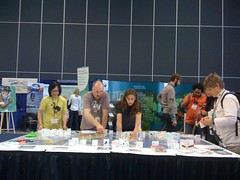Articles by Giles Lane
Giles Lane is founder and co-director of Proboscis. He conceived of and developed the Diffusion eBook format with Paul Farrington and designed the Proboscis StoryCube.

Download A4 | US Letter PDF 4.5Mb
About : In August of 2009, Dodolab was invited by the Confederation Centre of the Arts to Prince Edward Island to respond to issues surrounding the Experimental Farm in Charlottetown. During our discussions about the future of this large parcel of picturesque land, the concept for the Postcard Places project developed out of an interest in the relationship between iconic landscapes and a place’s sense of identity.
Published October 2009
Lisa Hirmer has both undergraduate and graduate degrees in Architecture from Waterloo Architecture Cambridge. She joined DodoLab after completing a thesis about the significance of nature and wilderness in contemporary culture, particularly within a Canadian context. She currently splits her time between working with DodoLab and more traditional work as an Intern Architect. As an emerging landscape photographer, she is particularly interested in sites where the relationship between human intervention and natural process is ambiguous and complex. She recently won an Ontario Association of Architects Award of Excellence for her landscape photography.
Laura Knap has an education in architecture from the University of Waterloo, Canada. Her work orbits in design, community building, photography, writing, and construction; and focusses on the agency, imagination and inhabitation of green spaces; as well as questions of sustainability.

Not all StoryCubes are published just on Diffusion – some are printed on card and distributed as physical objects. We’ve printed a StoryBox of 8 cubes about Proboscis’ projects, a special illustrated set by Australian comic artist Matt Huynh and our own set about Under-Used Assets for Perception Peterborough as well as one off cubes for projects like DodoLab Montreal and Social Tapestries.
Now with bookleteer it has become even easier not only to create beautiful StoryCubes, but to have them printed as physical objects too. Last week we produced a stunning example for Birkbeck College’s In the Shadow of Senate House – from design to delivery in a week. Alongside these were two special cubes made as a promotional items for some up and coming bands, as well as limited editions of StoryCubes commissioned as part of our Transformations series.
The arrival of bookleteer makes it extraordinarily easy to create single or double sided StoryCubes for creative projects, marketing campaigns, games and events. Prices start at 87 pence per cube (plus set up, delivery & VAT) with a minimum order of 250 – not necessarily one design : a single order could be 1 each of 250 different cubes, or 50 copies of 5 cubes, or in fact any combination of copies and designs (i.e. there’s no need to order even quantities of each design).
If you’d like to know more or want to try something out please get in touch with us at sales at proboscis.org.uk

Download A4 only PDF 5.6Mb
About : In The Shadow of Senate House is a research project and series of events taking place in 2009 and 2010. It explores the many resonances of London’s mini-skyscraper – as shadow cast across a site, as place of use and of passage, as a presence that masks and makes absences. More details can be found at intheshadowofsenatehouse.blogspot.com
Published October 2009 & printed in an edition of 250
Owen Hatherley is a freelance writer, a PhD student at Birkbeck, and author of Militant Modernism (Zero Books, 2009)’.
Victoria McNeile is completing a PhD at Birkbeck on the evolution, representation and politics of London squares.
Henderson Downing is researching psychogeography in literature and urbanism at Birkbeck, University of London. He has written for various journals and magazines and is a regular contributor to AA Files and Outside Left.
Esther Leslie is Professor of Political Aesthetics at Birkbeck, University of London and has a website www.militantesthetix.co.uk
*** made with www.bookleteer.com ***

Download
Book 1 A4 | US Letter PDF 4.6Mb
Book 2 A4 | US Letter PDF 6.2Mb
Book 3 A4 | US Letter PDF (to come)
About :
“Many of us returning were surprised and grieved to hear of the death of Brown, the furnaceman, who has held the position for several years and was generally liked and respected.”
The Mitre, Bishop’s University, Lennoxville, Quebec, Volume IV, No. 1, page 8, October 1896
The Rustification of Henry Thomas Brown eBook series was produced to accompany, and extend the narrative of, an exhibition of the same name at the Foreman Art Gallery, Bishop’s University, Lennoxville, Quebec, CANADA. They capture the playful mix of fact, fiction and personal narrative that is typical of Andrew Hunter’s work. The publications include images and texts drawn from the exhibition and research project which is based on the obscure life of the university’s former “furnaceman” (Henry Thomas Brown) and Hunter’s attempt to reconnect Brown with the history of the university and to explore Brown’s continuing spirit presence in the community that Hunter believes continues to cause unfortunate consequences.
Published September 2009
Andrew Hunter has produced exhibitions, site projects, publications and writings for institutions across Canada in the United States and Europe. At the core of Hunter’s work has been the exploration of the holdings of public institutions (museums, art galleries, libraries and archives), private collections, local history and national myths. At heart, Hunter considers his work to be an elaborate form of storytelling, engaging collections and history as a source for narrative play. Working in a gray area between fiction and non-fiction, he draws on such models as Truman Capote’s concept of the “non-fiction novel” and Jorge Louis Borges’ playful twists on the academic essay. The methods and processes of the museum/archive (forms of display, cataloguing and dissemination and accessibility) inform the structure of many of his works.
Currently the Director of RENDER, a unique arts based research and presentation center at the University of Waterloo (Canada), Hunter will begin a new position as Director of the DodoLab (a joint community/creative research program of the Musagetes Foundation and UW School of Architecture Cambridge) in January, 2010. Since 2008, he has taught in the Curatorial and Critical Studies program at OCAD University (Toronto). Hunter continues to work independently as an artist, writer and curator. His innovative thematic and fiction-based museum projects have been presented at the National Gallery of Canada, Art Gallery of Ontario, Vancouver Art Gallery, Leonard and Bina Ellen Gallery (Concordia University), Museum London, Art Gallery of Alberta, Mendel Art Gallery, The Banff Centre, Confederation Centre Art Gallery, Yukon Arts Centre, University of Toronto Arts Centre, the Museum of Modern Art Dubrovnik (Croatia), among others. His project Lalla Rookh: A Poetic Archive was commissioned by Proboscis and Deborah Smith as part of Navigating History. Hunter has received numerous grants and awards from The Canada Council for the Arts and Ontario Arts Council and received the Western Canada Magazine award for writing on arts and culture.
Andrew lives in Dundas, Ontario with his wife Lisa, daughters Maggie and Claire, dogs Penny and Nigel and the ever-present spirit of his late dog Roger. He continues to struggle to be a competent banjo and mandolin player.
*** made with www.bookleteer.com ***

Starting in October we will be running regular informal evening workshops for people to literally pitch up and publish using bookleteer.com. Initially these will be held at our Clerkenwell Studio for up to 15 participants – all you need is a laptop and some content (text /photos/ drawings etc) you’d like to create and share as eBooks or StoryCubes (shareables). We will provide free user accounts to bookleteer and guide you through the steps of preparing and generating your shareables to share online, via email or as physical publications. Once created you can publish them on your own website or, if appropriate, we can publish them on Diffusion.
The first workshop will be held during the week beginning October 12th 2009 (date tbc) between 6.30-9pm.
To reserve a place please email us at diffusion (at) proboscis.org.uk
Participants will be asked to make small donation to cover materials and refreshments.

In the summer of 2008, Jason E Bowman, Curator of the Temporary Exhibitions Program at The Public gallery, West Bromwich commissioned me to assist him with the collation of materials relating to The Ting: Theatre of Mistakes, a performance art collective active between 1974-1981. It was Bowman’s intention to republish Elements of Performance Art, a seminal, out-of-print collection of exercises by Anthony Howell and Fiona Templeton, and to curate a retrospective of The Theatre of Mistakes’ practice in April 2009.
Click to continue reading “Mare-Anne Mancio – Diffusion Residency Jan-Sept 2009”

Download A4 | US Letter PDF 575Kb
Update 20/10/2009: a modified eBook has been prepared that can be used in any location.
Download A4 | US Letter PDF 438Kb
About : This eBook has been produced as a collaborative field research tool for DodoLab’s community research at the 2009 ICASP Colloquium (Improvisation, Community and Social Practice – www.improvcommunity.ca) and Jazz Festival in Guelph, Ontario, Canada. DodoLab is interested in exploring the idea of the Creative City and this eBook is designed to engage colloquium participants and festival goers in the process of identifying and documenting what they individually consider to be “signs” of a Creative City. Participants will use this ebook to describe signs and their locations and these will then be used by a team of DodoLab photographers to produce a series of photo essays that will be published as eBooks. Like other tools developed by DodoLab, this ebook can be easily modified for other locations.
September 2009
DodoLab is a dynamic and experimental co-creative lab for engaging with communities, organizations and events that is collaborative and fluid. Based at the University of Waterloo’s School of Architecture (Canada) and lead by Andrew Hunter in collaboration with Musagetes Foundation (Canada), DodoLab brings together creative researchers/practitioners, community leaders, educators and students to challenge accepted ideas, assumptions and methodologies and to develop insights into contexts, processes and situations. DodoLab is not a predetermined package, program or methodology, it is a process-based exploration that emerges out of the needs, challenges, concerns and ideas of the communities, organizations, groups and institutions we collaborate with and draws its strength from the rich combination of skills, knowledge and experience these collaborations contain. The environment, youth, knowledge sharing, leadership, social innovation and community are central concerns of DodoLab and our philosophy of cultivating true collaboration and co-creation reflects the firm belief that we cannot solve the complex problems we face if we don’t work together with openness and respect. DodoLab looks to build relationships with its collaborators that are meaningful and lasting and that emphasize shared responsibilities for action and learning.
DodoLab’s current principal researchers are: Andrew Hunter, Lisa Hirmer, Laura Knapp, Barbara Hobot and Proboscis.
*** made with www.bookleteer.com ***

Download A4 | US Letter PDF 320Kb
About : DodoLab Wants To Know: About Green Space is a research survey designed to investigate ideas about green space. While many people feel quite strongly about the need for “green space” this term is often quite ambiguous and can refer to a number of very different kinds of space. This survey is meant to collect data but also to initiate discussion about the characteristics of green space. The data will be used to generate “Green Space Scales,” which can be used by communities as a place to start more complex discussions about green space and what it means. To use one of these books is to join the DodoLab research team and we encourage those who use them to share their findings with DodoLab.
Published September 2009
DodoLab is a dynamic and experimental co-creative lab for engaging with communities, organizations and events that is collaborative and fluid. Based at the University of Waterloo’s School of Architecture (Canada) and lead by Andrew Hunter in collaboration with Musagetes Foundation (Canada), DodoLab brings together creative researchers/practitioners, community leaders, educators and students to challenge accepted ideas, assumptions and methodologies and to develop insights into contexts, processes and situations. DodoLab is not a predetermined package, program or methodology, it is a process-based exploration that emerges out of the needs, challenges, concerns and ideas of the communities, organizations, groups and institutions we collaborate with and draws its strength from the rich combination of skills, knowledge and experience these collaborations contain. The environment, youth, knowledge sharing, leadership, social innovation and community are central concerns of DodoLab and our philosophy of cultivating true collaboration and co-creation reflects the firm belief that we cannot solve the complex problems we face if we don’t work together with openness and respect. DodoLab looks to build relationships with its collaborators that are meaningful and lasting and that emphasize shared responsibilities for action and learning.
DodoLab’s current principal researchers are: Andrew Hunter, Lisa Hirmer, Laura Knapp, Barbara Hobot and Proboscis.
*** made with www.bookleteer.com ***

 With the residency I was looking for ways to expand my use of Web 2.0. The eBook Generator provides a useful format in which to distribute essays to those who prefer not to read longer pieces online. Therefore I was looking to integrate producing eBooks with my activities on social networking sites such as Facebook, while simultaneously drawing some of the audience that exists for the eBooks as a project in itself towards my own online activities.
With the residency I was looking for ways to expand my use of Web 2.0. The eBook Generator provides a useful format in which to distribute essays to those who prefer not to read longer pieces online. Therefore I was looking to integrate producing eBooks with my activities on social networking sites such as Facebook, while simultaneously drawing some of the audience that exists for the eBooks as a project in itself towards my own online activities.
My approach to this was to produce material that I felt would be of interest to my audience both on social networking sites and beyond them covering new(ish) material on subjects I’ve had a long interest in, including the London art world and psychedelic drugs. However, I adapted my material after discussion of the eBook project with Giles Lane. Giles not only showed me how to use the Generator, we also had several long conversations about building an audience for this project and how what I was doing might fit into this.
Taking part in this process reinforced my view that it is possible, if sometimes difficult, to move an audience from one web based content delivery platform to another. Sometimes this is a matter of moving with shifts in web usage. I moved to Facebook ahead of much of the audience I’d previously built on MySpace – but as the shift from the latter social network to the former built, most of my old audience followed me. Getting people using Facebook to download from the eBook Generator or to look at material on other social networks such as YouTube is not as difficult to get them to look at traditional websites. However, the overall lesson was, as ever, persistence pays off. Rather than changing the way I worked, this reinforced my view that I’d been using the internet in an intelligent manner.
In the future I’d be interested in looking at ways in which I might use the Generator to develop my work as a novelist. It would be interesting to create a serial style novel to be delivered chapter by chapter via the Generator. This would, however, be a major commitment and in my view would require some extra funding to promote it in order to reach a large enough audience for the amount of effort involved to be worthwhile.
I found Giles and his team very productive to work with, but also great fun – and I enjoyed my free ranging lunch break conversations every bit as much as the actual work!
Stewart Home
September 2009
The eBooks
Dope smuggling, LSD, organised crime & the law in 1960s London
On The Death Of Julia Callan-Thompson
Bourriaud’s ‘Altermodern’ – an eclectic mix of bullshit and bad taste
Click This? MySpace & the Pornography of Corporately Controlled Virtual Life
Negotiating the Level 2 Project Space at Tate Modern
Very Naughty English Lady
Cunt Lickers Anonymous
A Journey To The Far Side Of Solipsism

Download
The Ting: Theatre of Mistakes: A A4 | US Letter PDF 2.2Mb Read Online
The Ting: Theatre of Mistakes: B A4 | US Letter PDF 1.6Mb Read Online
The Ting: Theatre of Mistakes: C A4 | US Letter PDF 1.8Mb Read Online
The Ting: Theatre of Mistakes: D A4 | US Letter PDF 1.9Mb Read Online
The Ting: Theatre of Mistakes: E A4 | US Letter PDF 1.9Mb Read Online
The Ting: Theatre of Mistakes: FG A4 | US Letter PDF 2.1Mb Read Online
The Ting: Theatre of Mistakes: H A4 | US Letter PDF 2.2Mb Read Online
The Ting: Theatre of Mistakes: IJK A4 | US Letter PDF 1.5Mb Read Online
The Ting: Theatre of Mistakes: L A4 | US Letter PDF 1.7Mb Read Online
The Ting: Theatre of Mistakes: M A4 | US Letter PDF 1.9Mb Read Online
The Ting: Theatre of Mistakes: NO A4 | US Letter PDF 1.6Mb Read Online
The Ting: Theatre of Mistakes: P A4 | US Letter PDF 2.1Mb Read Online
The Ting: Theatre of Mistakes: QR A4 | US Letter PDF 2.2Mb Read Online
The Ting: Theatre of Mistakes: S A4 | US Letter PDF 2.1Mb Read Online
The Ting: Theatre of Mistakes: TU A4 | US Letter PDF 1.8Mb Read Online
The Ting: Theatre of Mistakes: VWXYZ A4 | US Letter PDF 2Mb Read Online
Zipped Archive (all 16 eBooks) A4 | US Letter PDF 28Mb
About : An A-Z of The Ting: Theatre of Mistakes comprises 16 ebooks with documents (texts, letters, photographs, diagrams, artworks) drawn from this 1970s performance collective’s private archive and from original research conducted by Marie-Anne Mancio and Jason E Bowman. Each book has 26 pages, referencing the alphabet, however there is no more reason to begin with ‘A’ than ‘V,W,X,Y & Z’ and the democratic format of the set means entries are placed in unexpected proximity. Encouraging circuitous rather than linear, multi-perspectival rather than singular, readings and reflecting The Theatre of Mistakes‘ interest in chance, mutuality, and inconsistency, the A-Z is part introduction, part photo-essay, part-question, and part gossip.
Published September 2009
Marie-Anne Mancio is a writer and independent researcher who trained as an artist . She is intrigued by the notion of contradiction. Author of a doctoral thesis, Maps for Wayward Performers: Feminist Readings of Contemporary Live Art Practice in Britain (University of Sussex, 1997), countless art reviews, and a novel, Trio (forthcoming). She is currently collaborating with Jason E Bowman on curating a retrospective of The Ting: Theatre of Mistakes. Her website is www.hotelalphabet.net
*** created with www.bookleteer.com ***

Proboscis is very excited to announce bookleteer.com – our forthcoming service for creating eBooks and StoryCubes which uses the latest version of the Diffusion Generator. We are planning a private beta test of the service in early October, with a public version launching in 2010.
Bookleteer will allow individuals and organisations to create personalised eBooks and StoryCubes under their own identity (the front covers of Bookleteer-made eBooks can contain a logo image) and with a cover image to make each publication more distinctive and recognisable. Bookleteer supports all 4 types of eBooks (classic/book ; portrait/landscape) as well as single and double-sided StoryCubes. It will additionally support eBooks created in many other languages and non-Roman alphabets (Hindi, Chinese, Greek, Russian etc) and will enable Right-to-Left eBooks to be created for Right-to-Left languages (Arabic, Urdu etc).
We’ll be developing some pilot projects over the next 6 months to demonstrate Bookleteer’s uses and capabilities, especially around its new API which will allow other websites and systems to call its services to generate eBooks and StoryCubes from external content and datasets.
We’ll be posting regular progress updates on Twitter as well as here.

Download
Notebook 1 A4 only PDF 1Mb
Notebook 2 A4 only PDF 2.1Mb
Notebook 3 A4 only PDF 1.1Mb
About : A few weeks ago I was privileged to take part in a project which brought Porer and Pinbin, two Negkini speaking people from Reite (a village on the Rai Coast of Papua New Guinea) to the British Museum’s Ethnography Dept. They were with Dr James Leach (Head of Anthropology at the University of Aberdeen) who has done extensive field work in their village over the past 15 years, and who hosted their visit to the UK this summer. Their visit to the BM was to take part in the latest stage of the Melanesia Project, a project bringing indigenous people from Papua New Guinea, The Solomon Islands and Vanuatu to look at and discuss objects in the collection to increase understanding of their social, cultural and spiritual significance, as well as details of what they are made of, how they are made and by whom.
The Melanesia Project explores the relationships between a wide range of indigenous art and artefact forms, socially-significant narratives, and the indigenous communities from which historic collections of Melanesian art derive. Focusing on the important but largely unstudied Melanesian collections in the British Museum, this project aims to bring new perspectives to both the study of indigenous art, and the understanding of ownership, heritage, and relations between museums and communities.
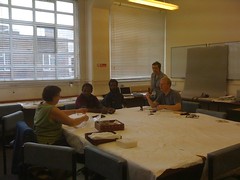
James and I had discussed meeting up during the project sometime before and then I had suggested using Diffusion Notebooks to create documentation of the process that could be easily shared with Porer and Pinbin’s own community (who enjoy a subsistence lifestyle in the Papua New Guinean rainforest without electricity or many of the communication technologies we take for granted). Our colleagues at the BM, Lissant Bolton (Head of Oceania Section) and Liz Bonshek (Research Associate) agreed, and I was invited to come in and observe and assist with the process.
It was a remarkable opportunity to see how people from a very different culture and civilisation respond to objects collected up to 170 years ago from their locality – how their relation to the objects was one rooted in the materials and the craft with which they were made. It was impressive to see the depth of tactile knowledge Porer and Pinbin have in their hands, how the act of touching was fundamental to their process of recognition of the plants and other materials used in making the objects as well as how they would have been made, as though the touching of the objects conducted a current to complete a circuit of memory.
Several of the notebooks of their observations of the objects made during the week are here to download, print out and make up. The notebooks, written in both English and Tok Pisin (the lingua franca of PNG) by James, have images of the objects as well as the people in the discussions, taken with digital cameras and printed out using a Polaroid PoGo printer (the sticky-backed prints placed directly into the notebooks). The notebooks were then taken apart and scanned in as flat A4 sheets to become Shareable PDf files. This enabled us to transform unique hand-written notebooks into digital publications that can be printed out, made up and shared as often as necessary. It was also an opportunity to give physical records to Porer and Pinbin that they could return to their village with and share their experiences and what they interacted with with their own community – making tangible some of the experiences that would be almost unimaginable and very difficult to communicate to people whose lives are lived within an entirely different relationship to the environment around them.
Giles Lane
August 2009

Download
English Version A4 | US Letter PDF 5ooKb
Spanish Version A4 | US Letter PDF 5ooKb
About : DodoLab Wants To Know is a community research tool which asks a series of simple questions designed to encourage reflection on the things that we have lost due to cultural, social and environmental change and what we’d like to bring back. This simple tool is meant to both collect information and encourage dialogue within communities and across generations. To use one of these books is to join the DodoLab research team and we encourage those who use them to share their findings with DodoLab (www.dodolab.ca).
Published August 2009
DodoLab is a dynamic and experimental co-creative lab for engaging with communities, organizations and events that is collaborative and fluid. A shared initiative of Render (University of Waterloo, Canada) and the Musagetes Foundation (Canada), DodoLab brings together creative researchers/practitioners, community leaders, educators and students to challenge accepted ideas, assumptions and methodologies and to develop insights into contexts, processes and situations. DodoLab is not a predetermined package, program or methodology, it is a process-based exploration that emerges out of the needs, challenges, concerns and ideas of the communities, organizations, groups and institutions we collaborate with and draws its strength from the rich combination of skills, knowledge and experience these collaborations contain. The environment, youth, knowledge sharing, leadership, social innovation and community are central concerns of DodoLab and our philosophy of cultivating true collaboration and co-creation reflects the firm belief that we cannot solve the complex problems we face if we don’t work together with openness and respect. DodoLab looks to build relationships with its collaborators that are meaningful and lasting and that emphasize shared responsibilities for action and learning. DodoLab is led by Andrew Hunter (RENDER). Probsocis continues to be a valued partner of RENDER’s and a significant contributor to the DodoLab initiative.

Download A4 | US Letter PDF 400Kb
About : ‘The Lunar House “Re-enactment”’ was commissioned by King’s College, Cambridge and forms part of a report by the author on the Arts Council England and King’s College, Cambridge Art and Law Seminar: Interdisciplinary and New Media Arts, which was held in Cambridge in October 2007. The story also continues Tony White’s Balkanising Bloomsbury project, and was created by cutting up, remixing and re-narrativising fragments from various sources including materials relating to the work of artists Heath Bunting and Rod Dickinson. ‘The Lunar House “Re-enactment”‘ was devised as an opportunity to reflect more deeply upon the work of artist Heath Bunting, which had caused minor controversy amongst Art and Law seminar participants without its being fully discussed.
Published July 2009
Tony White is Leverhulme Trust writer in residence for 2008-09 at The UCL School of Slavonic and East European Studies. He is theauthor of novels including Foxy-T (Faber and Faber) and the non-fiction work Another Fool in the Balkans. His most recently published work of fiction is Albertopolis Disparu (Science Museum Booklet), see http://sciencemuseum.org.uk/writer . He co-edited the fiction anthology Croatian Nights (Serpent’s Tail/VBZ) and edited the Brit-pulp collection (Sceptre). Tony has edited and published the artists’ book imprint Piece of Paper Press since 1994 and produced fiction in collaboration with or in response to visual arts and interdisciplinary projects by London Fieldworks, Bob and Roberta Smith, Alison Turnbull, Chris Dorley-Brown, Mark Hansen and Ben Rubin, Alan Phelan and others. The Balkanising Bloomsbury project has been supported by Arts Council England through Grants for the Arts, by the UCL School of Slavonic and East European Studies (SSEES) and the Leverhulme Trust.


Download A4 | US Letter PDF 5Mb
About : En este pequeño libro se muestran en forma breve algunas reflexiones que han guiado mi proceso creativo: esencialmente el lenguaje de la pintura relacionado con el gran interés de la vida en el planeta: su origen, sus extinciones y sus seres.
Estado de presencia provides a brief look at some of the reflections that have guided my creative process. Essentially the language of painting in relation to my passion about the planet: its origin, animals in danger and those already extinct and life in general.
Published July 2009
Cristina Luna nace en la Ciudad de México en 1963. Cursa estudios de música en el Conservatorio Nacional y realiza la licenciatura en Artes Plásticas en el área de gráfica en la escuela de pintura, escultura y grabado “La Esmeralda”. En 1994 es seleccionada en la Séptima Bienal Rufino Tamayo y en 1995 participa en la Bienal de Grafica de Puerto Rico. En ese mismo año es invitada a realizar una residencia artística en Villa Montalvo, en Saratoga California. En el año 2001 Cristina cambia su residencia de la Ciudad de México al pueblo de San Agustín Etla, Oaxaca donde pinta actualmente. Cristina ha tenido 16 exposiciones individuales de las cuales y ha participado también en diversas exposiciones colectivas tanto en México, Estados Unidos y Puerto Rico.
Cristina Luna was born in Mexico City in 1963. She studied music at the National Conservatory and holds a Bachelor’s degree in art from “La Esmeralda”, school of painting, sculpture and engraving. In 1994 Cristina was selected for the seventh biennial Rufino Tamayo and in 1995 participated in the Puerto Rico Biennale. That same year she was invited to be artist in residence in Villa Montalvo, Saratoga California. Cristina moved to San Agustín Etla, Oaxaca in 2001, where she currently lives and paints. Cristina has had 16 solo exhibitions and has been involved in several group exhibitions both in Mexico, United States and Puerto Rico.

Download A4 | US Letter PDF 3.4Mb
StoryCube 1 PDF 1.6Mb
StoryCube 2 PDF 1.6Mb
StoryCube 3 PDF 1.6Mb
About : The Octuplet: Story of Our Lives is the first published story in English by Dutch visual artist and illustrator Babette Wagenvoort. It tells the strange story of eight human-beings living inside their mother, while they prepare for their future. One of the octuplets seems better equipped for life than the others… Much like Babette’s visual work this story balances between reality and fiction, between poetry and prose.
Published July 2009 in the Diffusion Transformations series
Babette Wagenvoort (MA RCA) is best known for her red drawings from the series ‘Life According To A Rectilinear Personality‘, which she published daily on her website for years. As an illustrator she has worked for several publications like VPRO Gids, De Volkskrant, Vrij Nederland, Opzij and Hollands Maandblad in The Netherlands and the BBC, Le Gun and Dazed & Confused in the UK. Her drawings can be found as commissioned public art works and animations in schools, as wallpaper designed for Maxalot, but also as wall drawings, animations and installations within more regular exhibition spaces. She teaches drawing at the Royal Academy of Art (KABK) in The Hague and is curator of ‘Volkskrant Oog‘, an online platform for artists of the Dutch newspaper De Volkskrant. A new book with Babette’s drawings called ‘Mood Swing – An Alphabet of Moods’ will come out in July/August 2009.
*** a classic landscape eBook & StoryCubes created with the new Diffusion Generator ***

Download A4 | US Letter PDF 666Kb
Selected and Introduced for Short Work by Bronac Ferran, independent researcher and writer and Senior Tutor at the Royal College of Art
Edgar Allan Poe’s The Raven still causes a shiver to flow through my body now, re-reading it many years after I first heard it. This is poetry of feeling. There is a sense in which one is there, doomed forever to consider what the raven means with his incantation ‘Nevermore’. In this version, Poe’s near hallucinatory intensity is combined with a translation into French by the great poet Stéphane Mallarmé and stark images by Edouard Manet to form a magical combination.
Mallarmé and Manet, fountainheads of modern poetry and painting, were good friends in Paris in the 1860s and 70s. There were many points where their lives touched – indeed they lived in the same street and met almost daily. Mallarmé’s house was a kind of early social network node – the meeting point for a group of artists and poets called Les Mardistes who met on Tuesday evenings. We see in this work, a rare example of a great poet and great painter working in true confluence – both responding to another work and in the process, both honouring and transforming it. In many ways, this work seems to me to be a milestone – in advance of Mallarme’s later work – which broke with conventions of form and presentation in deeply significant ways. The influence of Mallarmé in terms of his dissolution of form, breaking down of the poetic into its essential parts and core components, sifting out sound, silences, analogies and tonal clarities has been acknowledged by many great 20th artists – from May Ray to Pierre Boulez and John Cage. His singular experiments which beautifully combine abstraction with performativity appear ever more significant over time as we look today at the emergence of software code and machine language as drivers of 21st cutural expression. His experiments with form exploring and revealing underlying latencies may be seen as a linguistic and poetic decoding. These were exciting developments that led directly to many of the most important aesthetic and cultural innovations of the 20th century and preceded the emergence, in particular, of serialism, concretism and forms of machine/computer art. We trace these experiments into process-based and open works of the 60s including Computerized Haiku, computer poetry devised by Margaret Masterman (with Robin McKinnon-Wood) of the Cambridge Language Research Unit as well as earlier tense exchanges between Boulez and Cage on the importance of otherwise of chance in composition and performance. Now, in the 21st century, when remix and recombinant processes are accepted as mainstream and hypertext is common we can only imagine what it might have been like to take those first steps, to reorganise the order of things and shift a cultural modality forever.
Bronac Ferran
London, 2009
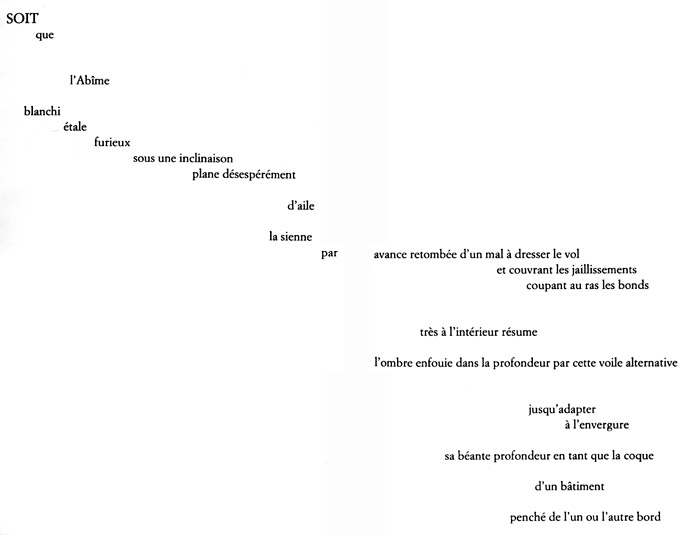
Edgar Allan Poe (1809-1849) was an American writer and critic, famous for his stories of the macabre, and often credited as the creator of detective fiction.
Stéphane Mallarmé (1842-1898) was a French poet and critic, perhaps best known for his typographic experimental poem, Un Coup de Dés Jamais N’Abolira Le Hasard.
First Published in 1875
Sourced from Project Gutenberg

Downloads
Axonometric A4 | US Letter PDF 240Kb
Cornell Lined A4 | US Letter PDF 210Kb
Genkoyoush A4 | US Letter PDF 225Kb
Perspective A4 | US Letter PDF 215Kb
Polar A4 | US Letter PDF 225Kb
Squarecross A4 | US Letter PDF 235Kb
Tumbling Blocks A4 | US Letter PDF 250Kb
A few weeks ago I came across Kevin Macleod‘s website, incompetech, where he has created a series of free graph and notepaper generators for making all sorts of useful and intriguing designs. We’ve combined a small selection of his page designs into Diffusion eBooks as examples of how we can further extend the Shareable Notebook range, and offer custom and personalised eNotebooks for different purposes.
*** ‘book’ version eBooks made with the new Diffusion Generator ***


Download A4 | US Letter PDF 1.4Mb
About : BlakeWalking is a new way of conversing, participating, publishing, performing & *creating* on the hoof. The aim of Blakewalking is to Transform an everday walk into a *Visionary Experience*. We want you to join us out on the streets, on the web & on your mobile – making notes, recording thoughts & feelings, responding to the world we walk through – and the world *within*! See http://www.timwright.typepad.com/L_O_S for more details.
Published June 2009
Tim Wright is a digital writer, a cross platform media producer and a director of XPT Ltd. See www.xpt.com or follow @moongolfer on Twitter.
*** a landscape ‘classic’ eBook made with the new Diffusion Generator ***


Download A4 | US Letter PDF 328Kb
About : Much of the drug smuggling, drug manufacturing and drug dealing centred on London in the 1960s remains undocumented. This is an outline of various links between people such as club hostess and showgirl Julia Callan-Thompson, murky underworld figures like Alan Bruce Cooper, and art world insiders such as Francis Morland.
Published June 2009
Stewart Home is an artist who has used social networking sites such as MySpace as the location for much of his non-gallery work in recent years. He is also the author of many books of fiction and cultural commentary, including 69 Things to do With a Dead Princess (Canongate, 2002), and The Assault on Culture: Utopian current from Lettrisme to Class War (AK Press 1991). His latest novel is Memphis Underground (Snowbooks, 2007). Online resources relating to Stewart Home’s work can be found at
www.stewarthomesociety.org
*** a ‘book’ (long edge binding) eBook created using the new Diffusion Generator ***


Download A4 | US Letter PDF 1.9Mb
About : The Thirty-Six Stratagems is collection of ancient Chinese proverbs whose origin is unknown, but is understood to date back to the late Ming or early Qing dynasty. Contemporary versions are all derived from a tattered book discovered at a roadside vendor’s stall in Sichuan or Shannxi in 1941, first coming to wider attention in 1961 when published in the Chinese Communist Party’s Guangming Daily newspaper.
The Stratagems (an alternative title was The Secret Art of War) are often paired with Sun Tzu’s celebrated Art of War, but lean more heavily towards the fields of politics, diplomacy and espionage. The text restricts itself to simply naming each strategy with a brief explanation, often containing allusions to the I-Ching, or Book of Changes – modern editions often also contain illustrative stories from folklore and history.
Six multiplied by six equals thirty-six.
Calculations produce tactics which in turn produce calculations.
Each side depends upon the other.
Based on this correlative relationship, ploys against the enemy are devised.
Rigid application of Military theory will only result in defeat on the battlefield.
Unknown first publication date, believed late Ming or early Qing dynasty
Sourced from Wengu and Wikipedia
Translated by Stefan Verstappen
*** a ‘book’ (long edge binding) eBook created using the new Diffusion Generator ***

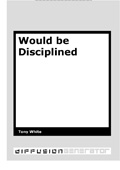
Download A4 | US Letter PDF 270Kb
About : ‘Would be Disciplined’ continues Tony White’s Balkanising Bloomsbury project. The story was created by cutting up, remixing and re-narrativising fragments from various sources including the Sydney Morning Herald, transcripts from the trial of Slobodan Milosevic at the International Criminal Tribunal for the Former Yugoslavia (ICTY) and the Richard Burton translation of The Book of the Thousand Nights and One Night. ‘Would be Disciplined’ was supported additionally by the Australia Council, Performance Space, Sydney, and the Institute of Advanced Studies at University of Western Australia, Perth. The story was written at UWA as part of a series of events to mark the culmination of Barbara Campbell’s 1001 Nights Cast. A version of the story is also archived on the project’s website at http://1001.net.au
Published May 2009
Tony White is a writer and author of novels including Foxy-T (Faber and Faber) and the non-fiction work Another Fool in the Balkans. His most recently published work of fiction is Albertopolis Disparu (Science Museum Booklet) – see http://sciencemuseum.org.uk/writer . He co-edited the fiction anthology Croatian Nights (Serpent’s Tail/VBZ) and edited the Brit-pulp collection (Sceptre). Tony has edited and published the artists’ book imprint Piece of Paper Press since 1994 and produced fiction in collaboration with visual arts and interdisciplinary projects by London Fieldworks, Bob and Roberta Smith, Alison Turnbull, Chris Dorley-Brown and others. Balkanising Bloomsbury has been supported by Arts Council England through Grants for the Arts, and by the Leverhulme Trust. Tony is currently writer in residence at the UCL School of Slavonic and East European Studies (SSEES) supported by the Leverhulme Trust through their artists in residence programme.

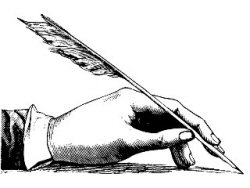
We’d like to get more feedback and reviews from people who download the eBooks and StoryCubes on what they think of them (both the formats and the individual titles) –
- what do you use them for (personal reading/set texts for students/research/inspiration/gifts etc)?
- how would you review a particular eBook or StoryCube?
- do you design your own eBooks using, or inspired, by our schematics?
- would you like to create your own eBooks or StoryCubes using the new Diffusion Generator?
- what kinds of eBooks/StoryCubes would you like to see us commissioning?
- how can we make this site and the library better, easier to browse, more accessible?
Please feel free to reply using the Reviews/Comments section of this post or a specific eBook/StoryCube you want to comment on. Thanks.

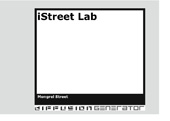
Download A4 | US Letter PDF 5Mb
About : With the increase in youth crime and violence we need to find new ways of dealing with the issue. ICT has proven to be a good initiative to capture the mind of young people. The real challenge is getting them to participate, this is where the iStreet Lab come in. The iStreet Lab presents an innovative experimental formula to tackle the problem at its roots. Providing expertise and creating a platform for information exchange and collaboration with those directly associated with the issues relating to crime and violence. The iStreet Lab is a revolutionary invention enabling its users to share knowledge using the tools provided.
Published May 2009
Richard Pierre-Davis is one of the co-founders of Mongrel and one of the four core members that made up the media artist collective. Richard has been a media artist and workshop practitioner since 1995, and his emphasis rests strongly on the facilitation of new media events within communities, providing them with the tools to create their own expressions of culture or creating a framework within which this expression can form itself. Richard’s work as a core member of Mongrel has led to an expertise from the shared experiences of working with many special groups from Aboriginal Australians to Navajo Indians, University faculties and students to some of the most deprived innercity communities.
mervin Thomas-Jarman is founder and director of mongrelStreet has been a street activist for more than twenty years. In 1995, he co-founded the avant-garde digital arts group ‘Mongrel Collective’, and in 1999 started the mongrelStreet Initiative to produce projects for street youth around the world. His first production was ‘When The Screen Goes Black’ a workshop produced for youth in the Stone Bridge Park area of Harlesden NW10, working with the Social Inclusion Unit of Brent Council. In 2003, under the mongrelStreet umbrella, he established the Container Project in Palmers Cross Jamaica, working with the community and local youth with challenging behaviour that had earned them the label ‘hard to reach’. In 2008 he created the iStreet Lab a community multimedia-training unit in a 240 litre garbage disposal wheelie bin.
*** a landscape eBook created using the new Diffusion Generator ***
Last month we completed our Feasibility Study for the Technology Strategy Board to investigate the potential for third parties to use Diffusion Generator to create and publish eBooks and StoryCubes via an API. As part of this process we developed a completely new platform for the Generator which makes it much more flexible – the prototype now includes numerous new features:
- creation of portrait and landscape eBooks
- use of both ‘classic’ and ‘book‘ binding methods for eBooks (see our design schematics)
- creation of single and double sided StoryCubes
- offline content design ability for eBooks & StoryCubes (via PDF upload)
- ability to flow HTML content into eBooks & StoryCubes
- Unicode support for non-Roman typefaces for languages such as Chinese, Arabic, Cyrillic, Greek, Japanese, Korean, Hebrew, Aramaic and many others
- eBook templates supporting right-to-left languages (e.g. Arabic)
- support for personalised/branded eBook & StoryCube templates
- support for future shareable designs to be incorporated into Generator
We have been testing the system since late March and shortly will publish some eBooks created recently using the new Generator to demonstrate some of the new formats (e.g. landscape and ‘book’ binding options). Meanwhile we are fundraising for the next stage of development to build a web interface for individual access, as well as some demonstrator projects with 3rd party partners (a museum, a university, a data aggregation platform, a visitor attraction centre) exploring how institutions might use the Generator to offer “tangible souvenirs” of digital experiences.
The “tangible souvenir” concept has been developed by Proboscis over the last couple of years based on our own experiences of creating projects that engage people with digital technologies (e.g. Urban Tapestries, Snout, Feral Robots etc) but which require digital technologies (e.g. a web browser) to review. We frequently find that people want to refer back to an experience with others but are often in a place (the pub, a cafe, over the dinner table etc) where they don’t have access to a suitable screen or fast web connection for showing what they experienced. The idea behind “tangible souvenirs” is simply to create physical outputs culled from digital assets created or engaged with during a ‘digital’ experience (such as using an interactive museum guide). A personalised eBook or StoryCube is then provided which can be kept in a pocket, passed around, given away and re-created as often as the person likes.
More updates next month…

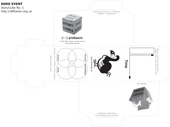
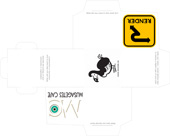
Download A4 only PDF 700Kb
About : This double-sided StoryCube has been designed for the Dodolab intervention at the 5th World Environmental Education Congress in Montréal, May 10-14 2009. Dodolab is a collaborative and creative intervention exploring different approaches to the concept of sustainability, resilience and adaptability. It is organised by Andrew Hunter of Render @ University of Waterloo and Shawn van Sluys of Musagetes Foundation. Giles Lane of Proboscis will be participating to engage delegates in creating a landscape of ideas using the cubes, as well as social mapping activities using a Buckminster Fuller Dymaxion Map.
Published May 2009
Giles Lane is an artist, researcher and teacher. He founded and is co-director of Proboscis, a non-profit creative studio based in London where, since 1994, he has led projects such as Urban Tapestries; Snout; Mapping Perception; Experiencing Democracy; Everyday Archaeology; and Private Reveries, Public Spaces. Giles is a Visiting Tutor on the MA Design Critical Practice at Goldsmiths College (University of London) and is a Research Associate of the Media and Communications Department at London School of Economics. Giles was elected a Fellow of the Royal Society of Arts in 2008 for his contribution to community development through creative practice.





